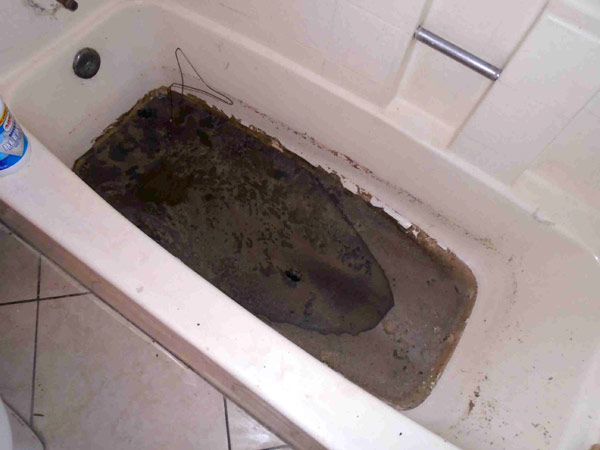The Comprehensive Guide: Drainage Rising Through the Bathtub
The Comprehensive Guide: Drainage Rising Through the Bathtub
Blog Article
Here in the next paragraphs you can discover lots of wonderful tips in regards to Why is There Sewage Coming Up Through the Bathtub.

Sewer backup in the bath tub can be a stressful and unhygienic trouble for any property owner. Not only is it bothersome, yet it additionally postures serious health and wellness risks and shows underlying concerns with the plumbing system. Recognizing why sewage is showing up with the bath tub is important for taking proper action to deal with the trouble successfully.
Intro to the Problem
Common Factors for Sewage Back-up
Obstructions in the Drain Line
One of the most typical reasons for sewer back-up is a clog in the drain line. This can happen as a result of the accumulation of debris, grease, or foreign things in the pipelines, protecting against correct circulation and creating sewer to support into your bath tub.
Tree Root Breach
Tree origins looking for dampness and nutrients can penetrate sewer lines through small splits or joints. With time, these roots can expand and expand, creating significant damages to the pipes and resulting in sewer backup concerns.
Recognizing the Problem
When sewer starts backing up into the bath tub, it's a clear sign of a problem with the drain system. The wastewater that needs to be moving away from your home is instead finding its back into your home, which can lead to significant damage and health hazards.
Potential Causes
A number of variables can contribute to sewer backup in the bath tub. From blockages in the sewer line to problems with the plumbing infrastructure, determining the origin is vital for discovering a service.
Aging Infrastructure
Older homes may have obsoleted plumbing systems that are much more susceptible to corrosion, splits, and damage. As pipelines age, they become a lot more prone to leakages and clogs, increasing the probability of sewer back-up occurrences.
Heavy Rainfall or Flooding
Throughout periods of heavy rainfall or flooding, the sewer system might come to be overwhelmed with excess water, causing backups and overflows. This can lead to sewage supporting right into tubs and other fixtures inside the home.
Indications of Sewage Back-up
Foul Odors
Unpleasant odors originating from drains or components, specifically in the washroom, may suggest sewage backup concerns. These smells are frequently solid and consistent, signaling an issue that calls for immediate attention.
Slow Draining Fixtures
Tubs, sinks, and toilets that drain gradually or not in all could be experiencing sewage back-up. If several components are affected all at once, it's likely that the concern stems from a typical point, such as the major drain line.
Gurgling Sounds
Strange gurgling or gurgling noises coming from drains pipes when water is running in other places in the house are indicative of air caught in the plumbing system. This air accumulation can arise from sewer backup and ought to be examined quickly.
Wellness Threats Connected With Sewage Backup
Contamination of Supply Of Water
Sewer backup can infect the water system in your home, posturing a major wellness danger to you and your family. Direct exposure to contaminated water can lead to intestinal concerns, skin infections, and various other health problems.
Mold and mildew Growth
Wetness from sewage back-up can produce suitable conditions for mold and mildew development in your house. Mold spores can worsen respiratory issues and trigger allergies in sensitive people, making timely clean-up important.
Spread of Condition
Sewage has hazardous microorganisms, viruses, and bloodsuckers that can cause a variety of illness, including hepatitis, cholera, and gastroenteritis. Entering contact with sewage or contaminated surfaces places you at risk of infection.
Tidying up After Sewer Backup
Sanitation Procedures
Thoroughly decontaminate and disinfect influenced areas after sewage backup to eliminate hazardous germs and protect against mold and mildew development. Usage suitable cleaning products and safety equipment to ensure secure and effective clean-up.
Reconstruction of Impacted Areas
Fix any type of damage to flooring, walls, or fixtures triggered by sewage back-up. Depending upon the level of the damages, you may require to change carpeting, drywall, or various other products to restore your home to its pre-loss problem.
Immediate Actions to Take
Turning Off Water System
In case of sewage backup, it's important to turn off the water system to avoid additional contamination and damages. Find the primary water shutoff valve in your house and shut it off until the issue can be settled.
Getting In Touch With an Expert Plumber
Managing sewage back-up is not a DIY job. Contact an accredited plumber with experience in taking care of sewage-related problems to evaluate the scenario and do required repairs or cleanings.
Avoiding Contact with Polluted Water
Until the sewage backup is dealt with, prevent contact with polluted water to avoid the spread of microorganisms and pathogens. Wear protective gear if you must be in the affected area and clean your hands thoroughly later.
Preventive Measures
Normal Maintenance of Drain Lines
Arrange routine examinations and maintenance of your sewer lines to determine and attend to prospective problems prior to they rise right into significant issues. This can include clearing out debris, evaluating for tree origin intrusion, and fixing any type of broken pipelines.
Setting Up Backwater Valves
Think about installing backwater shutoffs in your plumbing system to prevent sewage from flowing back right into your home during periods of heavy rainfall or flooding. These valves automatically close when water draws back up, safeguarding your residential property from contamination.
Correct Disposal of Household Waste
Prevent purging anything aside from toilet paper and human waste down the commode to avoid blockages and blockages in the sewage system line. Dispose of oil, oil, and other family chemicals correctly to reduce the threat of plumbing issues.
Why Is Water Backing Up in My Bathtub When I Flush My Toilet?
What to do about a sewer line clog
First, don’t bother with plunging. No amount of plunging will dislodge the clog in a sewer line. The clog is too far away. Plungers are for clogs in the toilet itself, not the sewer line. Plus, the most likely causes of a sewer clog are:
Tree roots Flushed toys or feminine products Grease buildup Those items don’t move easily. And in the case of tree roots, the roots need to be cut out of the pipe and the pipe will need to be repaired.
You’ll need a closet auger. A closet auger is a type of plumber’s snake with a protective cover to keep from scratching the delicate porcelain toilet. If the clog is further down, you may need to remove the toilet or use one of your cleanouts to get to the clog.
We also recommend doing a video inspection of the drain to ensure that the cause of the clog has been completely removed. Otherwise, you could have the same problem again in a few days or weeks.
https://mspplumbingheatingair.com/blog/why-is-water-backing-up-in-my-bathtub-when-i-flush-my-toilet

I discovered that review on while doing a lookup on the search engines. If you appreciated our post plz don't forget to pass it around. Thanks for going through it.
Visit My Site
Report this page